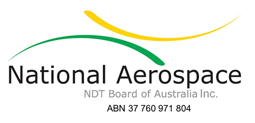Role of the Board
The NANDTB was established to satisfy the requirements of Australian Standard AS 3669 which is used by the Civil Aviation Safety Authority as the standard for qualification and approval of persons performing NDT on aircraft in Australia. The 2006 version was the same as the then EN 4179 (European) and NAS 410 (American), which resulted in a uniformity with these widely used standards. Each of these documents define the NANDTB as:
“An independent national aerospace organisation representing a nation’s aerospace industry that is chartered by the participating prime contractors and recognised by the nation’s regulatory agencies to provide or support NDT qualification and examination services in accordance with this Standard. Such services may include participation in approval.”
International approach
Internationally, the development of similar Boards has shown a variance in their composition and priorities, which is largely a result of the origins of the Board and the size of the aerospace industry in that country. Some Boards are affiliated to National Standards organisations while others are affiliated to industry based groups. And of course some have extensive aerospace manufacturing and operational activity while others are quite small by comparison. There is no single approach to the composition of a NANDTB which will satisfy all the various countries’ requirements. Rather the outcomes of the Board’s operation are more important than how it is constituted.
The National Aerospace Board of Australia acknowledges the support of the Civil Aviation Safety Authority. The various pages of this site show activities, projects, procedural documents and other information from the Board, and a link to contact it.
Formation of the Australian Board
The Australian Institute for NDT formed an Aerospace Technical Sub-committee in 1981 and it held its first meeting in May of that year. By the following meeting in November its name had changed to the Australian Aerospace NDT Committee (AANDTC). It was formed in recognition of the specialisation of the industry, but perhaps more importantly to undertake the task of producing a national standard for the qualification of NDT technicians. It was an eight year journey to produce AS3669 “Non-destructive testing – Qualification and registration of personnel – Aerospace-1989”. A principle role of the Committee in subsequent years was to review Level 3 qualifications and advise employers how to meet the specific requirements of the standard. AS3669 has been accepted by FAA, CAA and other Regulators.
In early October 2005 the Civil Aviation Safety Authority (CASA) hosted a meeting for representatives of the aerospace industry involved in NDT. The meeting was to discuss the implications of the recent revision to AS3669, which for all intents and purposes aligned it with EN4179 “Aerospace Series – Qualification and approval of personnel for non-destructive testing”. This version introduced the concept of a NANDTB.
CASA had been using AS3669 for some time as its standard for the industry. While the technical requirements were not believed to impose additional complexity, CASA stated that unless a NANDTB was established under the terms of the standard, it (CASA) would have little choice but to develop and administer its own governance document for NDT. The Board must demonstrate that it is representative, accessible, open, transparent and independent.
National airworthiness regulators across Europe and elsewhere where the European Airworthiness Safety Agency (EASA) rules apply, are requiring their aerospace sectors to form NANDTBs to oversee the training, qualification and allied aspects of NDT personnel working in aerospace. CASA has adopted the same interpretation of the AS3669 by insisting that a NANDTB is an essential part of the effective application of the standard.
An interim Board of 2005 was tasked with developing scope and governance documents. The interim Board consisted of; Len Bichard (BAE Systems), Garry Bowden (Boeing/HdH), Tony Collier (AeroNDI), Paul Duffell (Hawker Pacific), George Faulkner (Aviation Component Services), Shayne Flynn (Boeing Amberley), Colin Hockings (Qantas), Malcolm Oakey (Rosebank Engineering), Ron Quirk (Helitech) and Peter Virtue (DSTO). Additionally, CASA and the Royal Australian Airforce participate in observer roles.
Members officially elected
On Thursday 23rd March 2006, 28 representatives of the aerospace industry came together to elect a National Aerospace NDT Board. Albert Fleming representing CASA explained the Authority’s desire to continue to recognise the value of Australian Standard AS3669 as the standard for qualifying NDT personnel in Australian aerospace. The alignment of AS 3669 with EN4179 (European) and NAS 410 (American) resulted in the need to form this Board and this in turn resulted in the dissolution of the earlier Australian Aerospace NDT Committee. CASA indicated that this was the only pro-active group in aviation support to show such initiative, and that it held the potential to be of great value to the Authority and to the industry. Australian companies which conform to the requirements and use the NANDTB should be well placed to satisfy regulators worldwide.
